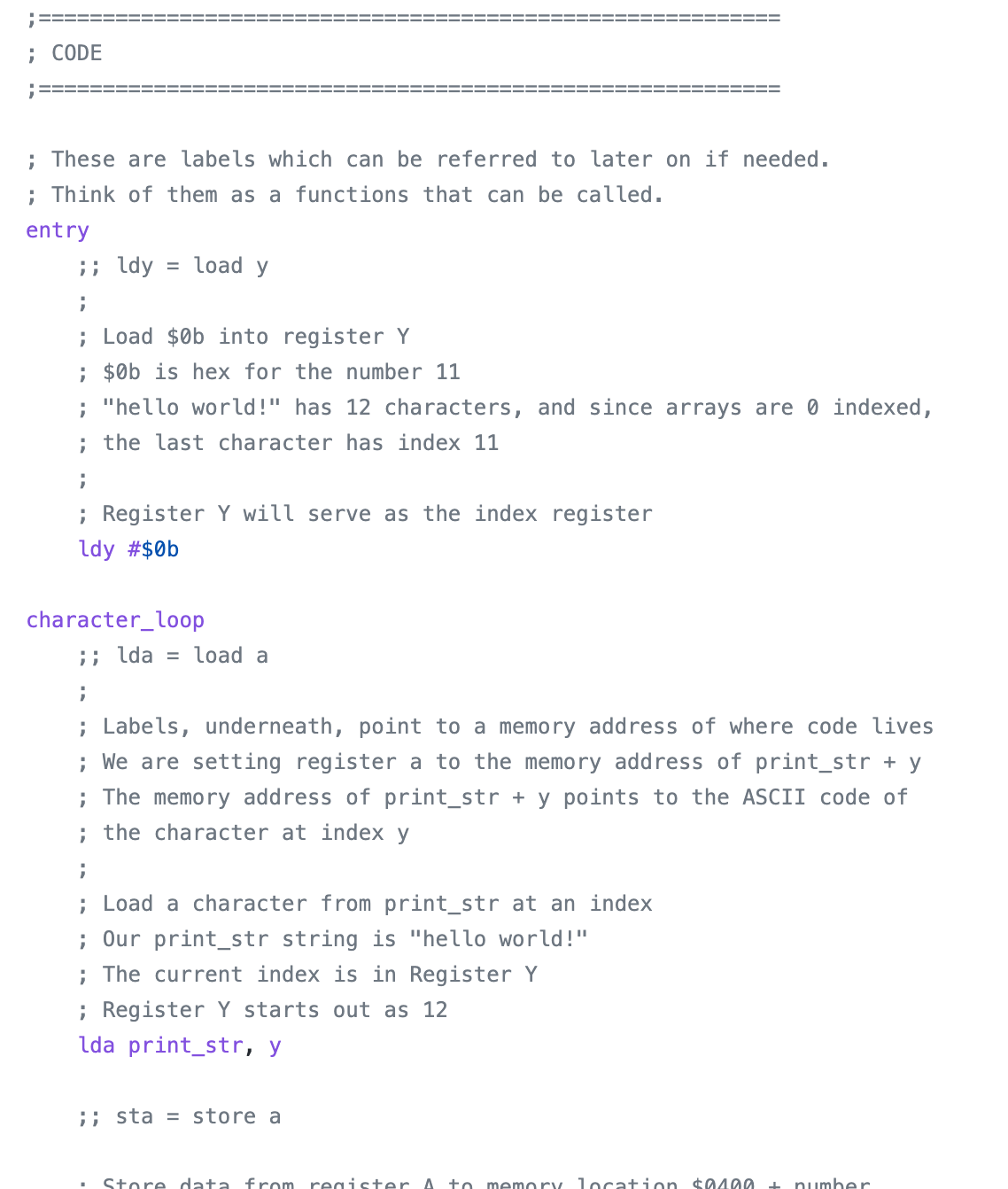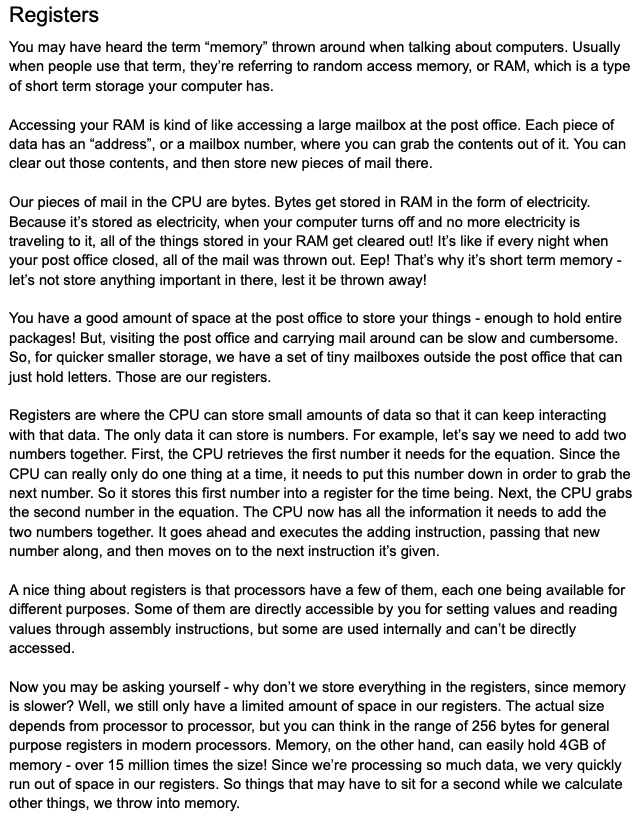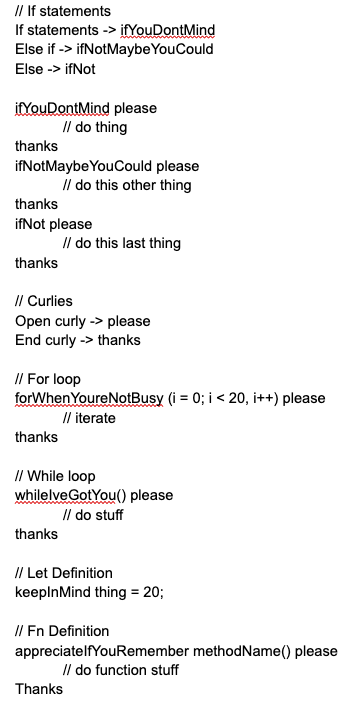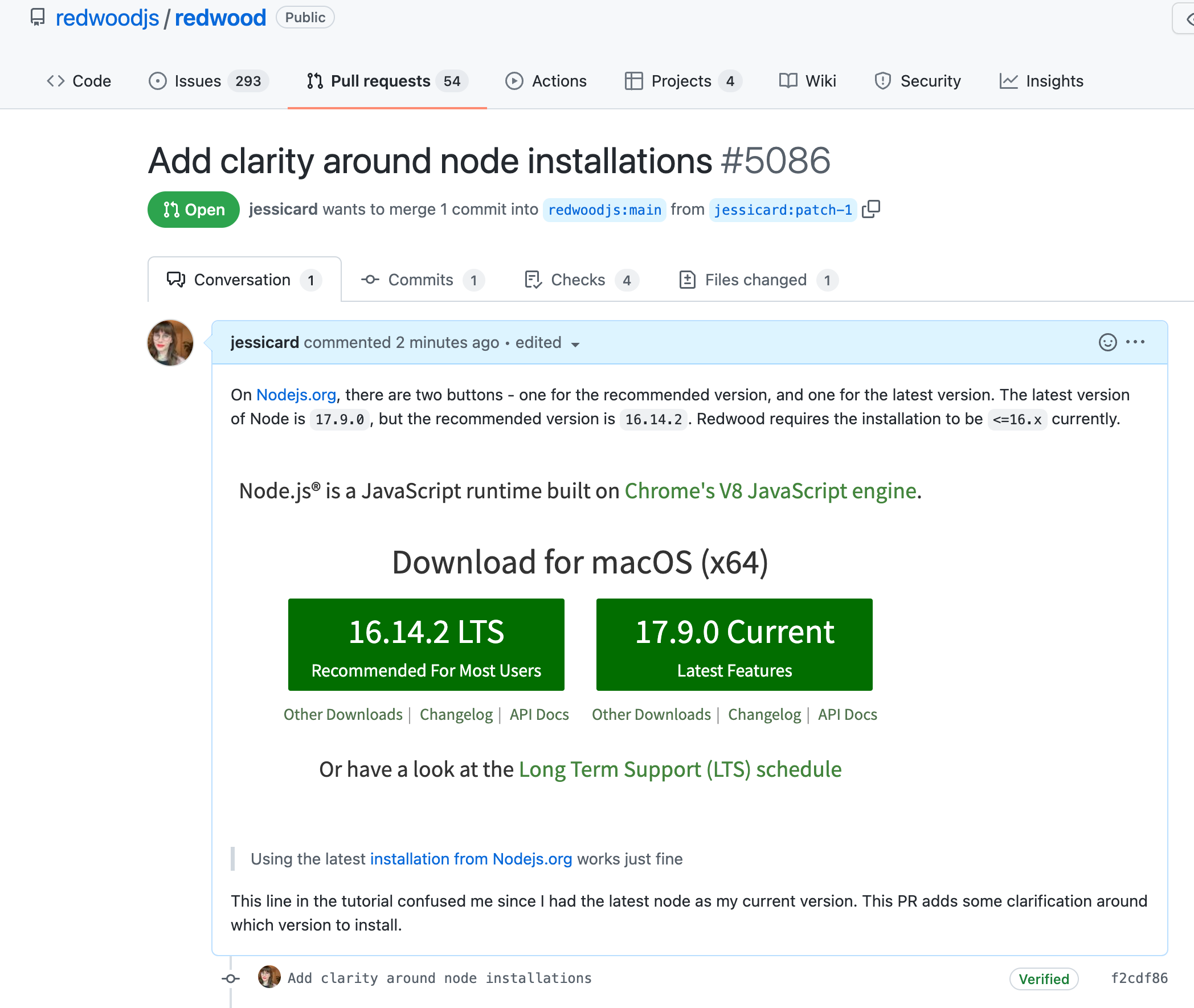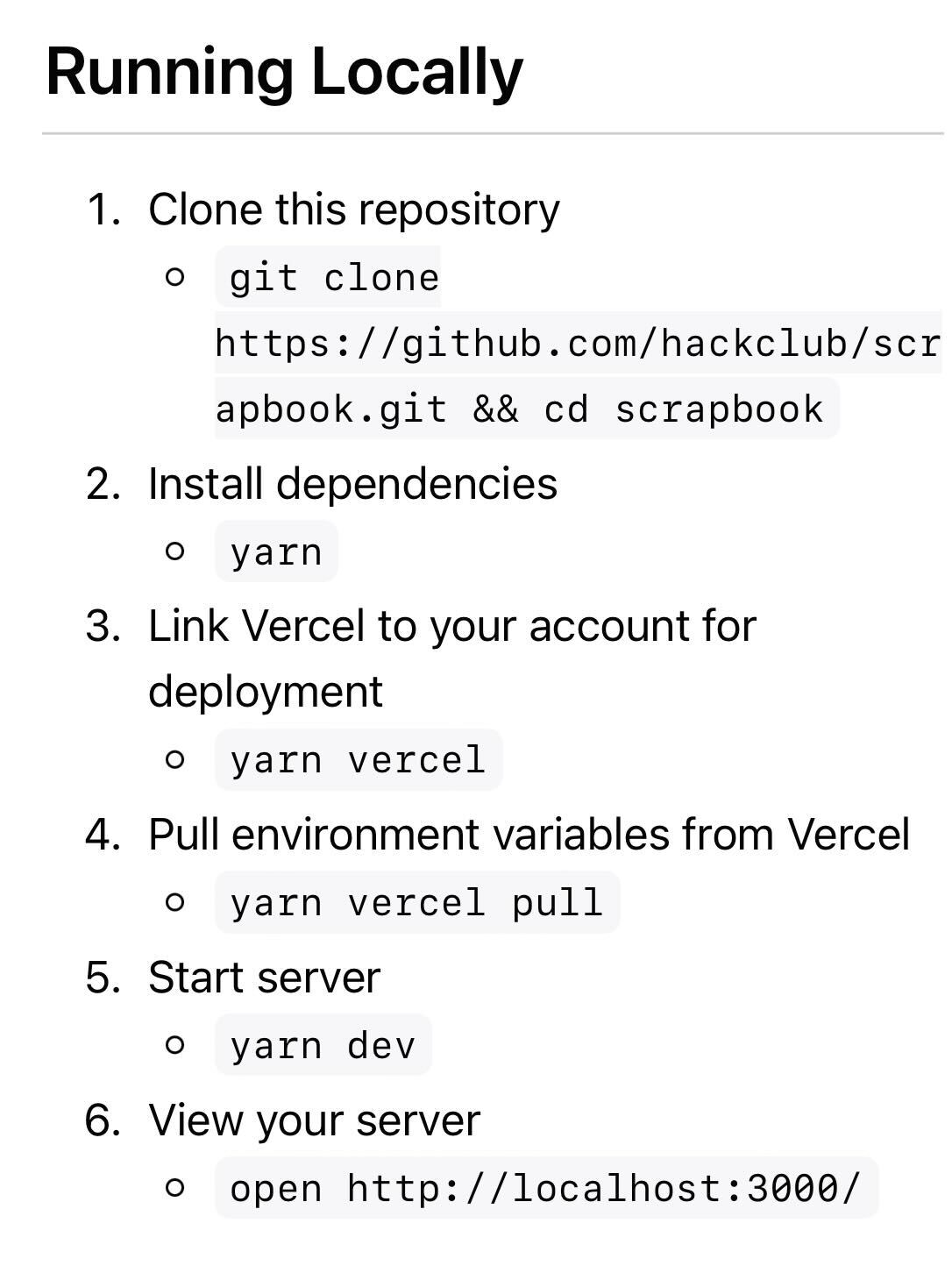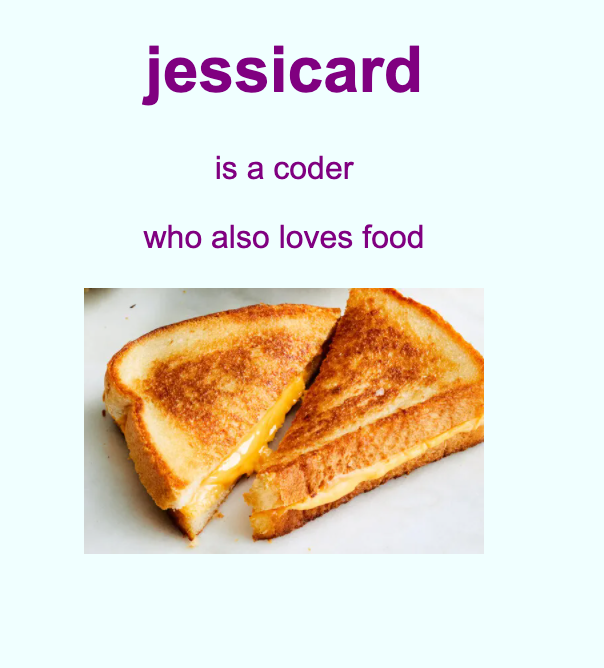/Applications/vice-x86-64-gtk3-3.6.1/x64sc.app/Contents/MacOS/x64sc
second, when assembling the program, our vscode setup didn’t automatically open VICE for us. so we had to manually open the .prg in VICE after we created it# Load the number 30 into register 18 LOAD x18, 30 well, you totally can’t!!! which confused me for awhile! but it turns out, if you use an unrelated command in a funny way, you can get the same effect. enter the `ADD` instruction. `ADD` adds a number from *one register* to a *second register* and saves them to *third register*. # Add the contents of register 2 to register 3 and save that into register 1 ADD x1, x2, x3 now let’s enter the `ADDI` instruction. it stands for `add immediate`, which adds a number from *one register* to a *number* you provide and saves that to a *second register*. # Add the contents of register 2 to the number 30 and save that into register 1 ADDI x1, x2, 30 now let’s introduce our final actor, the `x0` register. this register is special - it’s a 0 constant, meant to be used whenever you need a 0. why not just use a number 0? great question - often, these commands require registers, so this register can act as 0 for us whenever we need it. for example, in the case of `ADDI`, at least one of the numbers to add has to be from a register. now that we have all this set up, here’s what we can do. # Add 30 to the contents of register zero, or x0, and save that into register x18 ADDI x18, zero, 30so, to repeat that: let’s add the contents of register 0 (which is 0) to 30, and add that into register 18. 30 + 0 = 30, save that into register 18. we did it!!! 🎉 anyways, come hang out with me in #some-assembly-required, where development of some assembly required is happening!
strlen function myself since that’s how i’m doing it in the assembly program, but i’m just using the built in function for that for now 😇
there’s also hello world examples in each directory if your curiosity strikes you but you want smaller examples!politescript, a very useless but very polite language i would like to make. because sometimes i want javascript to not feel like i’m so demanding, you know?knit() and purl(), and it’ll generate what that looks like in the actual stitches! 🧶 lots more things to implement here but we are having fun with it▲
gamelab

made with:gamelab
-
/branding page and gave a blurb on our UI components

